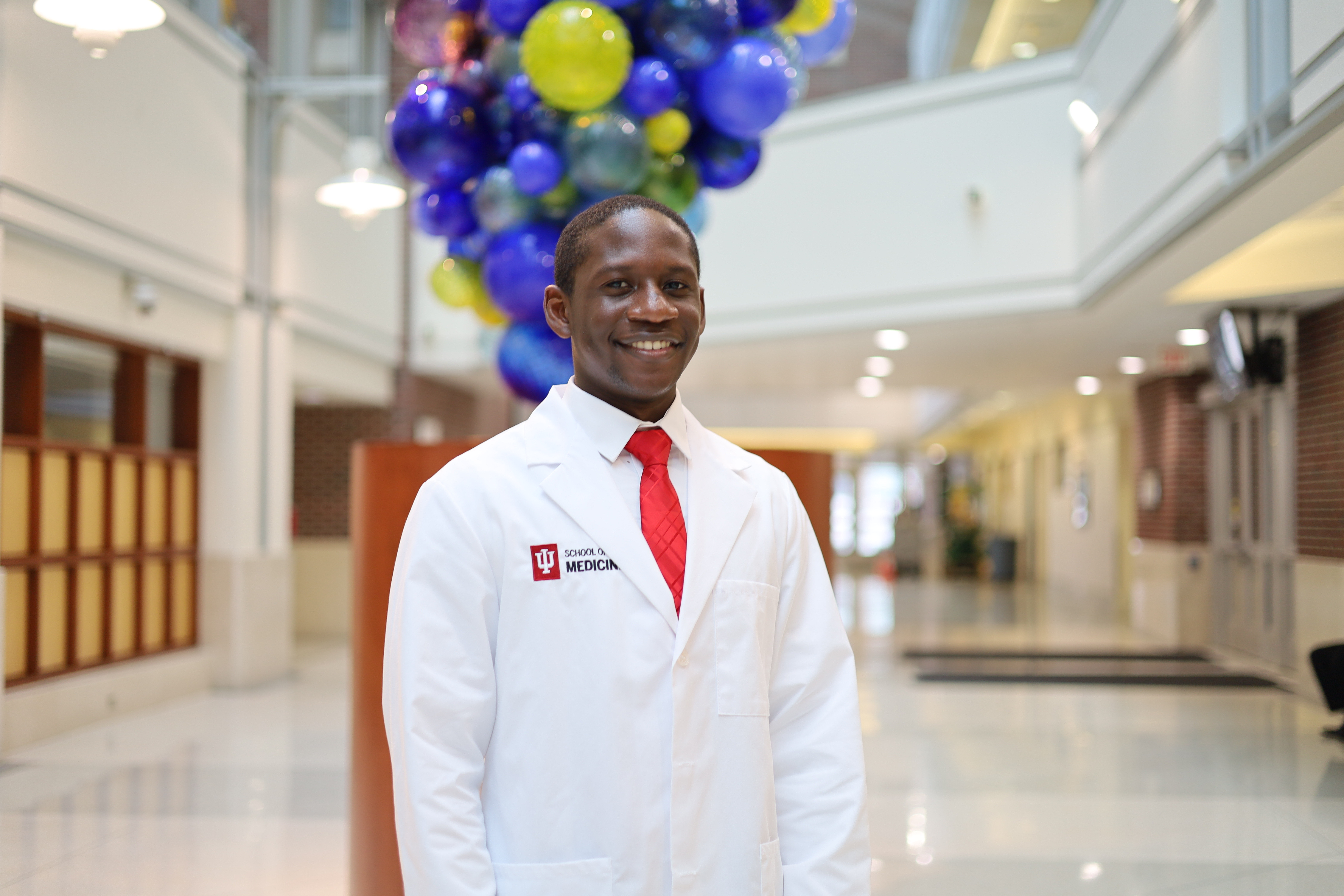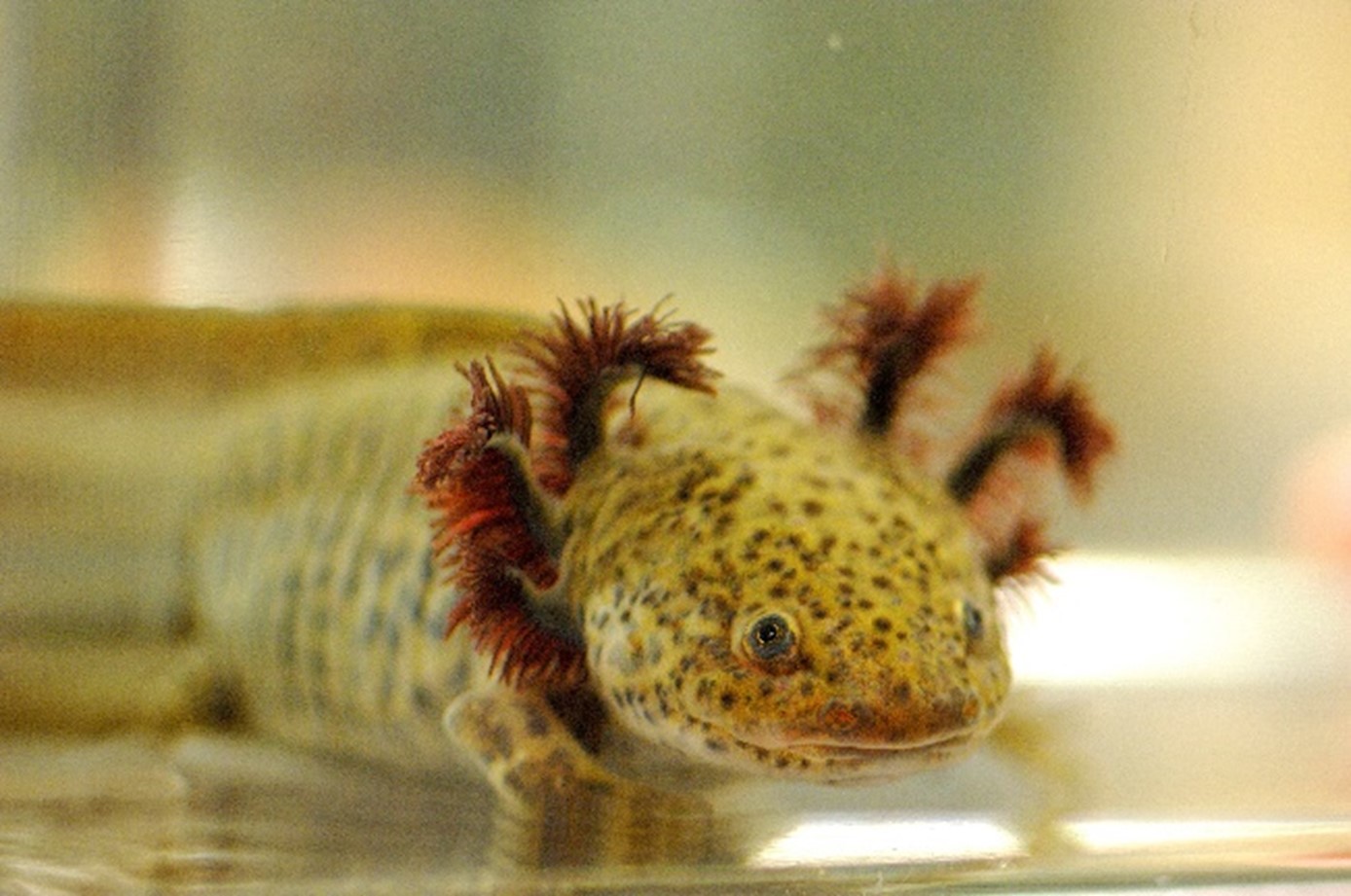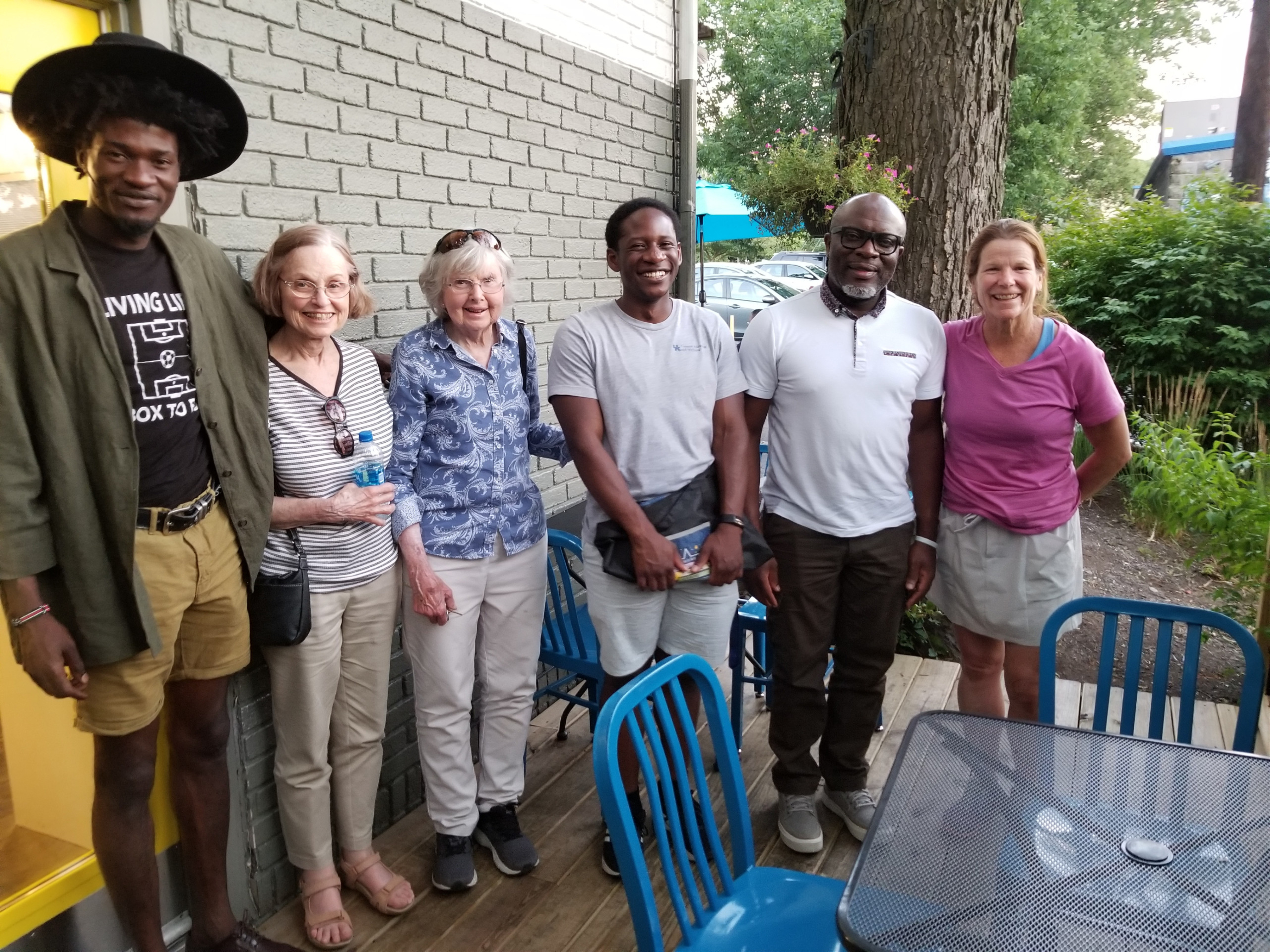Mirindi Kabangu: Diversity Supplement Award Helps Scholar Jumpstart His Dream Career
For much of his life, Mr. Mirindi Kabangu has held a passion for learning. As an undergraduate student, this passion led him to the laboratory of Dr. S. Randal Voss, Professor and Director of the Ambystoma Genetic Stock Center (AGSC) at the University of Kentucky. Dr. Voss’ research focuses on the biology of the axolotl, a salamander known for its remarkable ability to regenerate lost or damaged tissues, including whole organs and limbs, as well as parts of the central nervous system.

“My interest in science probably started around high school—maybe even middle school,” Mr. Kabangu (Figure 1) reflected. “I had some really good teachers, and my time in science courses invigorated me to want to learn more and ask questions about different things that you see around the world. It got me excited about asking cool questions.”
Mr. Kabangu’s fascination with the axolotl (Figure 2) was sparked during his freshman year at the University of Kentucky, when he volunteered for BioBonanza, a community-based outreach event organized through the school’s Department of Biology. As soon as he picked up one of the salamanders, Mr. Kabangu recounted, he knew that he wanted to study these extraordinary animals. He began working in Dr. Voss’ laboratory during his sophomore year, and he has received funding through two ORIP Diversity Supplement awards under Dr. Voss’ mentorship—one as an undergraduate student and one as a post-baccalaureate researcher.
In the first award, during his undergraduate training, Mr. Kabangu developed a quantitative PCR–based assay to detect Batrachochytrium dendrobatidis, a chytrid fungal pathogen, in the AGSC’s animal stocks. In the second award, Mr. Kabangu is examining how GLI3—a gene involved in the formation of tissues and organs—affects regeneration and normal development in the axolotl.

“It has been an incredibly rewarding experience working with Mirindi,” Dr. Voss stated. “We published some exciting research findings, but more importantly, the Diversity Supplement was mutually beneficial. Mirindi grew as a scientist, and I grew as a mentor. I can’t wait to see what Mirindi does next in his research career.”
Since completing his B.S. in biology in the spring of 2021, Mr. Kabangu has continued his research and training with the support of the second Diversity Supplement award. Additionally, his dedication and focus have led to him being a co-author on two high-impact scientific papers.1,2 Mr. Kabangu recently enrolled in the Indiana University School of Medicine as an M.D. student and ultimately plans to pursue an M.D./Ph.D. degree—marking the beginning of a career path that will allow him to continue pursuing questions about the underlying biological basis of human health. Mr. Kabangu is following in the footsteps of his late grandfather, who also held an M.D./Ph.D. and spent his life researching women’s health in the Democratic Republic of the Congo.
Mr. Kabangu credits much of his success to the support he has received from mentors throughout his life. Born in Congo, Mr. Kabangu immigrated to the United States at a young age with his older sister. When he began attending school, his teacher put in extra effort to help Mr. Kabangu and his family navigate the U.S. education system. That teacher’s efforts helped spark Mr. Kabangu’s passion for learning.

Now, Mr. Kabangu seeks out mentors, such as Dr. Voss, who continue to challenge him today. He also serves as a mentor for others. As an undergraduate student, Mr. Kabangu connected with the Congolese Ministry at the University of Kentucky Catholic Newman Center. This group, which introduced him to the local Congolese community, works in collaboration with Box to Box Tumaini Academy, a local after school program that supports the youth community through sports, positive experiences, and leadership development (Figure 3). Mr. Kabangu meets regularly with young students—many of whom are also immigrants—through the Box to Box program. He credits these experiences for their role in shaping his passion for mentorship.
“My mentors showed me just how big of an impact advocacy, encouragement, and support can make on someone’s life,” Mr. Kabangu remarked. “My life goal is do the same for those coming after me and help as many people as possible achieve their full potentials.”
ORIP has supported other scholars through the Diversity Supplement awards, helping to further their careers in biomedical research. ORIP is committed to supporting the NIH effort to enhance the diversity of the biomedical research workforce. ORIP supports training and career opportunities for high school and undergraduate students, postdoctoral fellows, and eligible investigators from diverse backgrounds, including those from groups that have been shown to be underrepresented in health-related research, through Diversity Supplement awards (Funding Opportunity Announcements PA-21-071 and PA-21-345) and the Individual Predoctoral Fellowship (PA-21-052). For more information on the Diversity Supplement program and other ORIP mentorship opportunities, please visit the Mentoring Opportunities page.
References
1 Trofka A, Huang BL, Zhu J, et al. Genetic basis for an evolutionary shift from ancestral preaxial to postaxial limb polarity in non-urodele vertebrates. Curr Biol. 2021;31(22): 4923–4934.e5. doi:10.1016/j.cub.2021.09.010.
2 Voss SR, Smith JJ, Cecil RF, et al. HDAC inhibitor titration of transcription and axolotl tail regeneration. Front Cell Dev Biol. 2021;9:767377. doi:10.3389/fcell.2021.767377.



